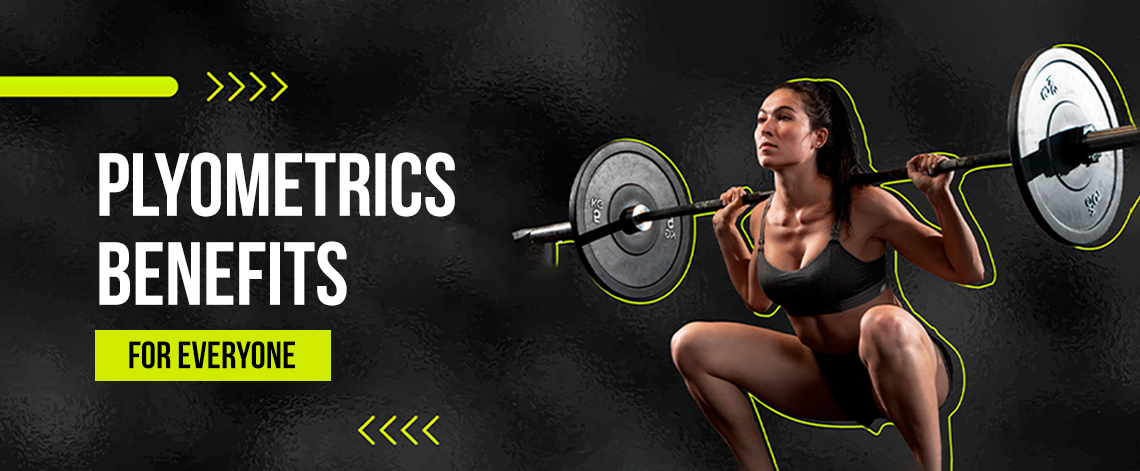What are plyometrics?
Plyometrics is a type of exercise that involves high power and explosive movements to enhance athletic performance, flexibility, and general capacity. Any exercise that involves playing for a while, such as jumping multiple times, single leg jumps, and sprinting, are all plyometric exercises.
It is one of the most overlooked and least practiced forms of physical exercise, which is quite unfortunate, especially given that it offers an array of benefits to every fitness enthusiast, be it a novice or a professional athlete interested in fine-tuning his/her fitness regimen. There doesn’t always have to be a need for a long session and they can be done without apparatus.
A problem many fitness people face
Fitness and working out are challenging things. They require discipline, time, and physical and emotional endurance. It is something to be proud of, and it rewards us with better health, physical appearance, confidence, and a stronger will or resolve.
Instead, what becomes the general practice for most individuals is the training of a particular part of their overall fitness, such as just doing running exercises or weightlifting exercises. Although this is sometimes intentional and an individual feels they only want to engage in that activity, a majority do not understand that there are other forms of exercise that benefit you, unlike weightlifting.
There are many times I have seen athletes weightlifting and training like bodybuilders so they can jump higher or run quicker, only to be disappointed at the end, where now they have lost their agility and have become slower. This is a very common and understandable problem since fitness is a very broad term and it is easy, especially for young athletes who, with a combination of their ego and the inexperience that follows the age, hurt themselves. That is why it’s important to always research and be informed before you decide.
How plyometrics can help athletes?
The truth is that elements of plyometrics are used in almost all sports. That is mostly in the warm-up stage, when the athletes do drills to get their bodies prepared but that is not plyometrics at its fullest. Many high-profile organizations incorporate high explosivity box jumps and band resistance jumps into their training. They are also used a lot by personal trainers and camps designed to improve athletes.
As far as the vast majority of organizations are concerned, plyometrics are not used for multiple reasons but mainly because of budget and they expect athletes to do them on their own (many of them just tell them to work out without further instructions ). This results in the problem mentioned above, where most of the athletes train to become bodybuilders and not athletes.
This should not limit you and your dreams; plyometrics can be done without any equipment and you do not need specialized coaches or programs. As long as you follow the basics and start scaling them once you’ve gotten better, you will start to see results.
What I mean by that is not that athletes should not weigh quite the opposite; all I’m saying is they should optimize their workout routines based on the sport. For example, if you’re a basketball player and you do squats to increase your vertical, you should aim for low reps but high velocity, not the opposite, as you’re building endurance, not vertical explosiveness. Generally, I recommend a workout plan that combines lifting with plyometrics.
How plyometrics can help everyone?
Plyometric training exercises result in cardiovascular enhancement, which means better heart rate and health; builds bone mass, and minimizes incidences of injury. One of their main benefits is how efficient they are. You don’t need to do prolonged sessions as they involve quick, hick intensity workouts, and you don’t need any kind of equipment. Remember, even though sprinting is considered plyometric, you can run upstairs or use anything that can simulate a box for boxing jumps.
Also, it improves muscle coordination, balance, sleep quality, mental health, and focus. In addition, sprinting burns a lot of calories and can really help you on your weight loss journey. Lastly, studies have even proven that sprinting affects your testosterone, which is especially beneficial for men, who, compared to other generations, have drastically lower levels of testosterone.

Summary
I like to say that weightlifting is the way you build muscle and plyometrics is the way you learn how to use the power of the muscles that you develop. I think it is a very good supplement to all kinds of workout plans, and unlike other ones where you don’t have time, money, or equipment, Plyo is accessible to everyone and should not be overlooked by fitness participants.
If you have a gym subscription, you may find some gym equipment. After some weeks of work, you will be surprised by the benefits of plyometrics, such as how much your body has advanced and how you scaled it as much as you want.
The best-case scenario is that you build a combination of endurance, explosiveness, and power, but I know how hard it is for some people who barely have time for lifting at the gym as it is. Nonetheless, if you can squeeze in some sessions of plyometric workouts or combine them at the gym, whether you’re a professional athlete or you’re just thinking of improving your speed, plyometrics would be really beneficial. Just be sure you are doing the exercises in the correct form, especially in the beginning. Be careful about the load you put your body through and prevent injury as much as you can. Just like in the gym, you don’t immediately put on heavy weights.
Author:
Menelaos Shima



